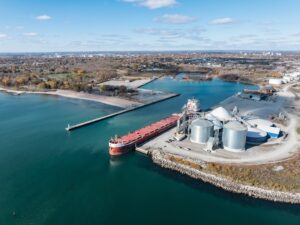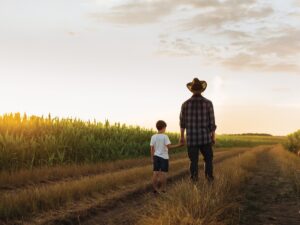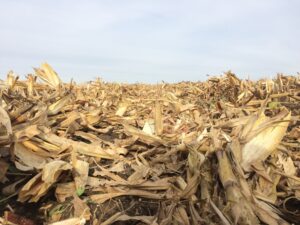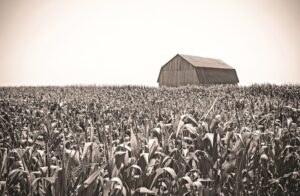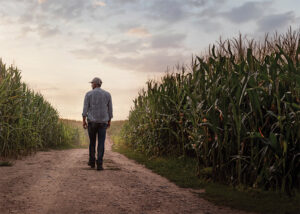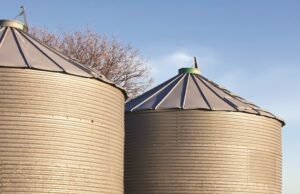Critical ground
SENATE OF CANADA COMMITTEE REPORTS ON SOIL HEALTH
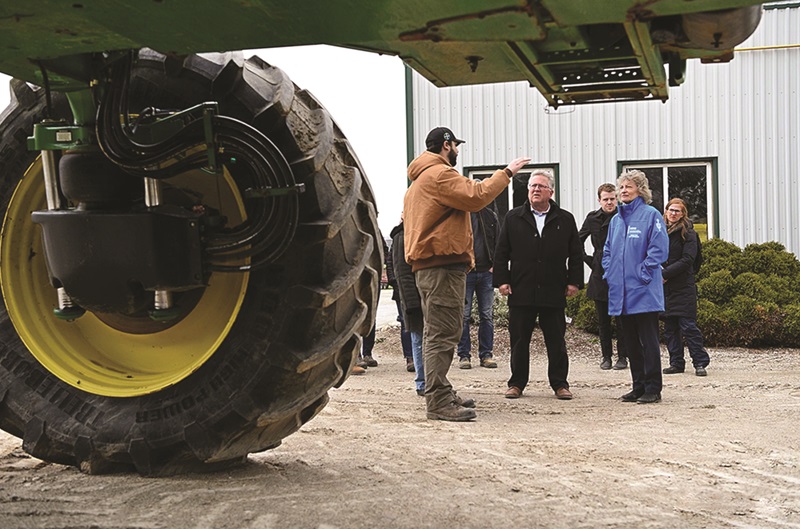
EVALUATING THE CURRENT STATUS OF SOIL HEALTH AND DETERMINING HOW TO TACKLE SOIL DEGRADATION AND PRESERVATION ACROSS THE COUNTRY WAS THE PURPOSE OF A RECENTLY COMPLETED SENATE OF CANADA STUDY.
Led by Senator Rob Black, the Standing Senate Committee on Agriculture and Forestry spent nearly two years digging into the topic. The final report, Critical Ground: Why Soil is Essential to Canada’s Economic, Environmental, Human, and Social Health, presents 25 recommendations to the federal government.
The new report was released in June 2024, which marked 40 years since the first and only other Senate soil study was published. While soil was at risk at the time of the first report, Black emphasizes that the problem has only become more urgent.
“Soil is often overlooked, yet it’s essential to all life,” he says. “We must act on this now because we do not have another 40 years to protect and conserve our soil.”
FACT-FINDING MISSION
Over the course of the study, the committee of Senators heard from 153 witnesses from across Canada and also received 74 written briefs from soil science researchers, agronomists, farmers, ranchers, foresters, environmental organizations, agri-businesses, industry groups, and various levels of governments.
Some committee members also travelled internationally to attend soil conferences in Scotland and Italy to study what other countries are doing to support soil health, which Black says provided valuable insights.
While most of the Senators do not come from an agricultural background, Black shares that he is delighted with the interest that the committee has shown over the two years.
“My colleagues prepare very well for witnesses, and they learned an awful lot,” says Black, noting the unique experiences of digging their hands into different types of soils, burying underwear, climbing into the lysimeter at the Elora Research Station, and digging shovels into dry, native grassland in Western Canada.
After the study concluded, Senator Paula Simons commented: “Healthy soil doesn’t just grow better crops and trees. Regenerative ranching and farming practices can moderate climate change by sequestering more carbon in the soil itself. And carbon- rich soil is better able to withstand drought and flood. Today, we need ranchers, farmers and environmentalists to see themselves as partners in the fight against global warming, soil loss and soil pollution.”
TOP RECOMMENDATIONS
The report highlights concerns from farmers, ranchers, producers, and soil health experts about the unprecedented challenges of growing food. Floods, droughts, wildfires, and the loss of farmland are among the many causes of soil degradation across the country.
It outlines 25 recommendations to the federal government to work with the Canadian agricultural and forestry sectors and municipal, provincial, territorial, and Indigenous governments to tackle soil preservation aggressively.
While the recommendations aren’t necessarily ranked by importance, Black is hopeful that the first three will be top priorities. These recommendations include designating soil as a strategic national asset, following an Australian model of appointing a national soils advocate and collaborating to support the development of a consensus on measuring, reporting, and verifying soil health.
“Moving forward with these recommendations would show that the feds do care for our soil,” he says. “We do so much for air and water, and in my mind, this is the third leg on the three-legged stool because we need air, water and soil to survive,” he says.
Recommendations to better understand the state of soil health and its evolution
- The Government of Canada designate soil as a strategic national asset.
- The Government of Canada appoint a national soils advocate.
- The Government of Canada collaborate with the provinces and territories to support the development of a consensus on how to measure, report, and verify soil health.
INDUSTRY RESPONSE
Black shares that the report has been well received by individuals and organizations across Canada so far. Within a few days of the report being published, he learned that agriculture researchers had already referenced the report in multiple grant applications, another avenue for its use that was not previously considered.
“I’ve also heard from many farmers and they’re very pleased that the Senate has finally taken a look at the health of our soils,” he says.
At the University of Guelph, Dr. Claudia Wagner-Riddle, professor and research leadership chair in the Department of Environmental Sciences, believes the report has put a spotlight on the importance of healthy soil and will make a valuable contribution in guiding future initiatives and policies to improve soil health across Canada.
“Healthy soils are the basis of so many important ecosystem goods and services, including the provision of food, clean air and clean water,” she explains.
“We need a coordinated effort to protect and care for soils and this starts with the recognition that healthy soils are important for Canada.”
WHAT’S NEXT
After a Senate report is published, the federal government has 150 days to review and comment. Given this timeline, Black expects a written reply to the 25 soil recommendations in early November.
“We write these reports for the federal government, but at the same time, I think this one should also resonate with provincial and territorial governments and even municipal governments,” he says.
While the committee will now shift their focus to studying wildfires and food security, Black notes that the members will be watching for the federal government’s response and look forward to hearing about the orders of the government collaborating on soil health initiatives. •





